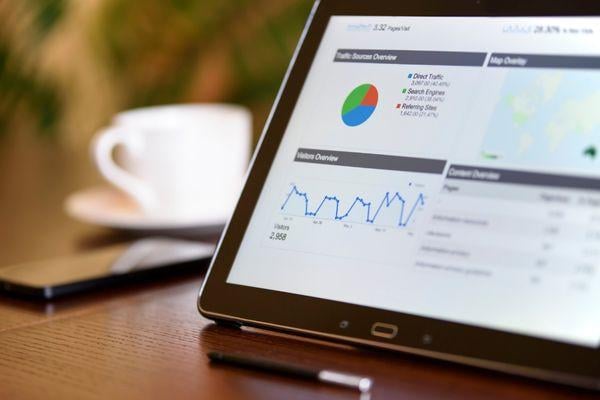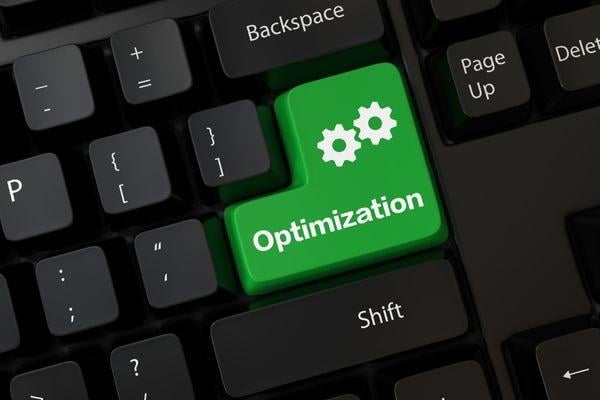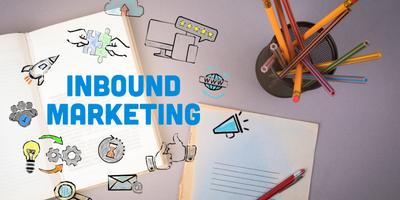
How Audience Segmentation Can Boost Your Inbound Marketing Results
It’s a well-known fact that one of the keys to successful inbound marketing lies in the ability to reach the right audience with the right message. However, for many marketers, the challenge oftentimes lies in segmenting and targeting their audience, as it can be difficult to know exactly which group of people to target for a particular product or service.
But this doesn’t have to be a challenge; if done correctly, audience segmentation can be a powerful tool for boosting your inbound marketing results. I
n this blog post, we’ll talk through the basics of audience segmentation, how it works, and how you can use it to enhance your inbound marketing results.
Too busy to read the article? No worries! The team at Donovan Digital Solutions are experts in segmenting audiences to increase ROI and keep business thriving. Fill out the form below to get a free consultation.
Quick Breakdown
Audience segmentation can be an invaluable tool for inbound marketing, as it allows businesses to develop targeted campaigns tailored to individual customer demographic and needs.
This ensures that content reaches the right person in the right place at the right time, optimizing conversions and return on investment.
Donovan Digital Solutions can provide the expertise needed to get your inbound marketing strategy off the ground. Fill out the form below for a free consultation.
Table of Contents
What is Audience Segmentation?
Benefits of Investing in Segmentation
Data-Driven Strategies and Insights
Optimize Content and Campaigns
The Impact of Segmentation on Inbound Marketing Efforts
What is Audience Segmentation?
Audience segmentation is a vital tool for modern inbound marketing campaigns. It is the practice of identifying, understanding and categorizing various groups of consumers that share distinct traits. As companies move away from “one-size-fits-all” approaches to marketing, effective audience segmentation allows businesses to better tailor their messages and content, leading to improved customer engagement and loyalty.
At its core, audience segmentation helps to identify key demographics such as age groups, location, gender, interests, online behavior, and other criteria that marketers can use to target their desired customers with tailored messages.
Segmentation can provide data-driven insights into customer behavior which marketers can take advantage of for more effective campaigns that convert into sales.
It's important to recognize the limitations of segmentation; alone, it does not tell the whole story about an individual or explain the customer's journey. That's what makes personas different from segmentation—personas focus on customer behavior rather than demographics and contain other details like interests, preferences, challenges, and so on.
To generate truly optimal results from any inbound marketing campaign, a combination of comprehensive audience segmentation with relevant personas will be required.
Now that we understand what audience segmentation is and why it's so important for inbound marketing campaigns, let's discuss how it differs from customer personas in the next section.
How Segmentation Differs from Personas
The process of audience segmentation is often confused with creating buyer personas. While both are valuable tools for identifying target demographics, the outcomes and uses of each method differ greatly.
Segmenting your audiences can help you gain clarity over who to target and how to engage them in an effective manner while building buyer personas provides more details about their interests, concerns, and goals.
Segmentation acts as a broad brush approach to define groups based upon generalized information like demographics or data which has been collected through surveys or research studies.
Although some may argue that this generalization constricts creative opportunities for marketing campaigns, with segmentation, you get a much better picture of who you’re targeting and why. The resulting data helps build a framework for understanding what kind of people will be useful segments for campaigns, allowing marketers to precisely target audiences at scale.
In comparison, creating buyer personas provides marketers with more detailed information about their customers and potential customers.
By gathering specific bits of data on individuals, such as job titles, purchasing habits, or even psychographics, such as lifestyle choices or personal values, you can create targeted messaging for prospects further along in the buying cycle.
Additionally, buyer personas allow for greater customization across the client spectrum to meet individual needs and interests -- something that heavy segmentation can make difficult to accomplish.
The main difference between the two is that segmentation allows us to identify large groups of people who share certain characteristics but do not include the level of detail offered by buyer personas. Ultimately, a combination of both approaches ensures no aspect of consumer behavior remains unaccounted for when planning an inbound marketing strategy.
The benefits of investing in segmentation go beyond simply understanding current audiences: it enables future growth through aiding investment decisions around more focused campaigns such as dynamic content creation targeting only relevant recipients; it also provides an opportunity to adjust engagements with different user segments based on their real-time feedback metrics.
In the following section, we'll explore the key benefits of audience segmentation for boosting inbound marketing results.
Benefits of Investing in Segmentation
Investing in audience segmentation can be a powerful tool for any successful inbound marketing campaign. It offers a comprehensive understanding of your target market and their needs and allows you to tailor content to their specific interests—boosting conversion rates and ROI.
The two key benefits of investing in segmentation are improved targeting and messaging, as well as unlocked data insights.

Segmentation helps marketers focus their efforts on the most relevant audiences, strategically delivering content that resonates with each individual.
This improved targeting helps maximize conversions by capturing leads who are more likely to become customers. Because this approach eliminates unnecessary waste, optimizing both cost and time, campaigns become more profitable and efficient while still reaching desired results.
Additionally, more precise segmentation enables customizing messages to address the unique needs of each group of prospects. Personalization based on user data such as an address, gender, or knowledge level can enable brands to connect on an emotional level with their customers.
Consumers who have a positive experience based on personalization are more likely to engage, converting at a higher rate than those who receive generic mass marketing messages.
Investing in audience segmentation also unlocks valuable data insights that can inform marketing strategies throughout the buyer cycle, from initial research and nurturing leads toward conversion to post-sale retention.
Analytics gained from segmentation will give creators a full view into what works and which areas require improvement or further exploration.
This provides companies with an advantage over competitors who fail to utilize the insights available from segmentation.
In conclusion, investing in audience segmentation comes with numerous benefits that make it an essential part of any inbound marketing strategy looking to boost results. By providing improved targeting and messaging capabilities as well as unlocking valuable data insights, segmentation is an invaluable tool for achieving maximum efficiency.
In the next section, we will take a closer look at how improved targeting and messaging empower inbound marketing campaigns to reach even greater heights of success.
Improved Targeting and Messaging
When it comes to success with inbound marketing, a crucial factor is targeting and messaging. A key part of any inbound marketing plan should be a focus on effective segmentation and targeting.
By dividing the broad base of your potential prospects into smaller, more specific target segments, campaigns can be tailored to each audience's individual concerns, preferences, and needs. This way, you can create different types of content and messages that work best for each segment.
On one hand, focusing on certain segments rather than the target market as a whole can allow you to better understand what content will resonate with them, lead to further engagement and potentially result in increased conversions.
Additionally, by utilizing audience segmentation effectively, you can identify which channels are best for connecting with specific audiences.
On the other hand, ineffective targeting or sloppy segmentation may lead to wasted resources or even miscommunication due to a lack of reliable data-driven insights about these users.
In addition, in order to create effective campaigns for each segment, you must also have enough data available about them so that your messaging feels contextually relevant. Without this information, these efforts are likely to fall flat.
Focused targeting and messaging based on comprehensive audience segmentation allow companies to craft compelling marketing stories that stand out and hit home with their intended audiences.
To maximize effectiveness, marketers must have access to reliable data insights and take the time to accurately segment their target market before crafting any campaign messaging.
Now that we have illuminated how effective targeted messaging can translate into successful outcomes, we'll explore in our next section how leveraging data-driven strategies and insights can further increase the impact of inbound marketing results.
Data-Driven Strategies and Insights
Data is king when it comes to marketing, with data analytics informing every aspect of tracking campaigns and understanding customers.
Marketers can use audience segmentation effectively by drawing on detailed insights from customer surveys, website analytics, and industry trends.
By leveraging advanced analytics tools, they are able to not only identify who their customers are but also better understand their preferences and behaviors in order to tailor more effective strategies.

Understanding the customer’s journey is vital for success in this area. Data-driven strategies take into account how different segments interact with the marketing mix, allowing marketers to pinpoint activities that appeal to each group.
With accurate insights into how people make decisions, marketers can design tailored campaigns based on specific consumer needs in order to create more effective results.
Audience segmentation can also drive innovation and creativity in campaigns. For example, a company may find that one audience segment holds no interest in certain products or services, so by using segmentation data, marketers can craft an alternate approach that inspires those customers to engage with these offerings.
Utilizing such insights can help push past traditional approaches and lead to more successful campaigns. And as technology continues to improve, the accuracy of segmentation tactics and the opportunities for leveraging analytics become even greater.
Leveraging analytics is key for businesses if they aim to make strides in their inbound performance. By investing in audience segmentation and using data-driven insights, organizations can craft campaigns that are more relevant and appealing than ever before - making them well-equipped for future growth in a competitive marketplace.
The next section will explore how you can leverage analytics to improve your organization’s performance results.
Leveraging Analytics to Improve Results
Using analytics for marketing purposes helps businesses find out what works and what doesn't, allowing them to optimize their campaigns and increase their results.
By collecting data on customers' experiences, businesses can gain insights into the effectiveness of their strategies, making it easier to identify opportunities and develop target-specific approaches.
Analytics tools can analyze website performance, track user engagement, and use machine learning algorithms to better understand customer behavior. With this information, companies can gain a fuller understanding of who their target audience is and what type of content resonates with them.
They can also learn which pages are performing well and which are not and use this data to modify existing campaigns or create new ones.
By leveraging analytics, businesses are able to create more meaningful interactions with customers, leading to improved customer loyalty and increased sales.
Of course, there is also the risk of interpreting data incorrectly and losing out on potential revenue if certain data points are misapplied.
Still, when used properly, analytics can give marketers an invaluable view into who they're targeting and how they should be engaging with them in order to achieve the desired outcomes.
To make sure your inbound marketing results succeed, optimize content and campaigns based on the analytical data received. Metrics such as bounce rate or time on the page should be carefully monitored in order to determine which types of material engage users.
Furthermore, using A/B tests or split tests is a great way to compare different versions of a page to see which one converts better. By regularly analyzing analytics data, marketers can adjust their approach quickly in order to capitalize on opportunities as they appear and improve their results over time.
The next section will discuss how optimizing content and campaigns based on analytics data can help businesses achieve their desired goals with inbound marketing efforts.
Optimize Content and Campaigns
Content optimization and campaign optimization are essential components of any successful inbound marketing strategy. It is critical to recognize that all audiences are not alike, and creating tailored, targeted content can significantly increase conversion rates.
Companies must optimize the targeting, messaging, and content that they create to ensure their efforts are resonating with their intended audience.

When it comes to segmenting target audiences, companies should create distinct buyer personas for each segment and tailor their content accordingly.
By doing this, messages will be focused on the needs of the intended audience while also including a strong call-to-action that encourages engagement along the sales funnel.
Additionally, optimizing campaigns and content by segment will motivate users to take action and convert them into leads or paying customers.
From a marketing perspective, segmentation can be beneficial when producing content or campaigns as it allows for effective strategic differentiation and personalization of the message.
This personalization can lead to higher click-through rates and better overall engagement. This approach can also help improve the user experience by delivering relevant information with each interaction, as opposed to blanket messaging, which may not resonate with every potential customer.
Conversely, there are some drawbacks associated with segmenting content and campaigns. Managing multiple pieces of content for multiple segments can be time-consuming and expensive for businesses due to increased production costs associated with creating more than one type of content.
Furthermore, localized strategies may not receive enough attention if resources are divided too widely amongst different segments, thus limiting the reach of any individual piece of content or campaign.
Ultimately, careful consideration must be given when managing various content pieces or campaigns, as companies strive to reach target audiences through significant personalization without sacrificing the effectiveness or scalability of their messaging.
By creating an optimized marketing strategy through effective segmentation, it is possible to improve both user experience and results from inbound marketing efforts.
The next section will discuss the impact of segmentation on inbound marketing efforts so companies can leverage the power of this tool for maximum ROI.
The Impact of Segmentation on Inbound Marketing Efforts
Audience segmentation is the process of dividing a larger consumer market into smaller and more distinct groups that share similar needs, characteristics, or behaviors.
This practice can be extremely beneficial for businesses seeking to boost their inbound marketing results, as it helps to ensure that the most relevant messages are being sent to the right people at the right time.
Segmenting an audience allows companies to target specific user groups with tailored content and offers, creating a better user experience and higher engagement rates.
There are two primary perspectives on the impact of segmentation on inbound marketing efforts: those who believe that it leads to improved outcomes and those who assert it is unnecessary or can even lead to lower conversion rates.
Proponents of segmentation argue that slicing up an audience allows marketers to laser-focus their messaging so that it caters specifically to each subgroup’s individual needs and interests. They assert that messages personalized for each group will be much more likely to drive increased engagement, higher click-through rates, and, ultimately, stronger lead generation.
On the other hand, skeptics claim that segmenting an audience too finely can actually have a negative effect; they warn that this approach sometimes leads to generalized messaging that fails to adequately address the unique needs of each subgroup.
At the end of the day, there is no one-size-fits-all answer when it comes to the impact of audience segmentation on inbound marketing efforts.
It largely depends on each business’s specific goals and objectives. However, businesses seeking to maximize their return on investment should consider using this strategic practice as a part of their overall inbound strategy.
In the next section, we'll discuss how to create an effective audience segmentation plan for your business.
How to Segment an Audience
The key to successful audience segmentation is understanding your buyer's persona. After you understand who you’re targeting, then you can begin the process of actually segmenting that audience. Here are some methods for segmenting an audience:
Geographic: Geolocation can be a helpful indicator of customer behavior and interests – after all, people in rural areas tend to have different needs than folks in urban areas. Cities and zip codes can be helpful when looking at where customers live.
Demographics: Knowing basic information about your customer base is important for targeting relevant ads and messaging. Demographics such as age, sex, income level, education level, marital status, and occupation can provide critical data points for creating more targeted ads.
Psychographic: In addition to demographics, psychographics–or information about lifestyles–can also be useful for segmenting your customer base. This includes values, attitudes, interests, and opinions. When paired with demographic data, this provides a fuller picture of customer buying patterns and preferences.
Behavioral: How customers interact with your brand offers rich insights into how they use your product or services. Observations on customer shopping trends, such as how often they make purchases and how much they spend or the frequency with which they visit certain web pages, are extremely useful when determining who makes up your customer base.
Contextual: The context of customer actions or decisions alerts brands to certain customer feelings or expectations they may not have been aware of prior. Contextual triggers can help anticipate customers' needs or problems before they surface–allowing brands to remain one step ahead of their customers and subsequently increase their engagement rate.
Given that there is inherent nuance involved any time you’re dealing with human behavior and individual lives, it is important to consider both sides of the argument when utilizing these methods for audience segmentation.
On one hand, these methods allow companies to better understand their consumer base by enabling them to tailor messages and experiences specific to individual buyers’ needs and wants.
On the other side of the coin, however, there is cause for concern over privacy issues resulting from too granular details being collected about individual customers.
Audience segmentation should always be done thoughtfully and carefully when considering employing any of these techniques mentioned above while ensuring that buyers are protected while still giving personalized experiences suited to their particular needs.
Conclusion
In conclusion, segmenting your audience and creating buyer personas can increase ROI and keep your customers engaged and delighted.
If you are looking for experts in the field of inbound marketing and segmenting audiences look no further than the team at Donovan Digital Solutions.
Fill out the form below so you can stop worrying about marketing and get back to doing the things you love in your business.
Frequently Asked Questions
No, you do not need to use audience segmentation for every inbound marketing campaign.
Depending on the size and goals of your campaign, segmenting the different types of people who may be engaging with your content can be quite an intensive process.
Therefore, it’s important to consider how much time and resources may be needed to divide your target audience into segments versus using a tool like an email automation which can provide a more generic approach.
Audience segmentation is especially useful when managed more strategically and if you want to personalize your message for specific groups within your target audience.
Furthermore, by understanding and classifying the different audiences that may interact with your ad campaigns or website, you can promote and track more effective results in the long run.
Audience segmentation offers several advantages for inbound marketing.
By understanding who your customers are and what type of content resonates with them, you can create a more personalized experience for each of your audience segments.
Additionally, segmenting your audience allows you to tailor your message to match the individual needs of each segment, thus increasing the effectiveness of your inbound marketing.
Segmenting your audience also enables you to target specific types of users and channels more effectively, saving time and resources by avoiding sending content that won't be relevant for certain groups.
Lastly, it gives you deeper insights into customer behavior, so you can better strategize your future inbound marketing campaigns.
When it comes to tailoring content for different target audiences, audience segmentation is an effective tool.
By segmenting your audiences, you can gain an in-depth understanding of their behaviors, needs, and desires.
This will allow you to tailor relevant content that speaks to each individual segment.
To begin the segmentation process, first define the key characteristics of your audience, such as age, gender, geographic location, occupation, interests, and more.
Once you have identified these characteristics, you can create separate segments based on those commonalities. With this information in hand, you can then customize content for each segment.
For instance, for a younger audience, you may want to focus on creating visual and interactive content that appeals to that demographic, whereas, for older generations, you may want to tailor more traditional forms of content, such as articles or blogs.
In addition to tailoring content to different segments, audience segmentation can also help you better understand what platforms and channels are used most by each group.
This allows you to concentrate your reach and messages among those channels most used by your target audiences, resulting in higher engagement rates.
Overall, audience segmentation allows marketers to customize content and messaging specifically tailored to the needs of each individual segment in order to get maximum engagement with their target audiences.



